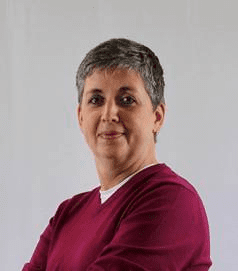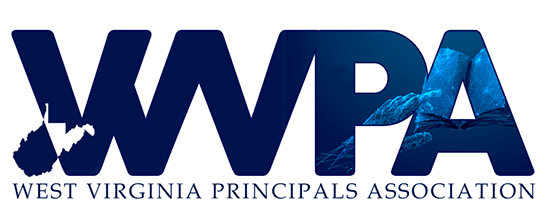
Principal Alicia Lett of Raleigh County
Named National Distinguished Principal of the Year
Biography
Alicia Lett has been principal of Cranberry-Prosperity Elementary for the past eight years. Lett has been a successful leader in promoting the social and emotional growth of her students. She was able to secure funding for the Leader in Me program at her school, which allowed the community to grow in the areas of academics, attendance, discipline, and culture. Since initiating the Leader in Me program, Cranberry-Prosperity has been named a Lighthouse School for Excellence in Leadership. Lett has gone the extra mile in terms of supporting her students, many of whom belong to single-parent households. She established a community and mentoring partner program with the local Chamber of Commerce and Appalachian Bible College, pairing at-risk students with a suitable mentor who can serve as a role model. Under Lett’s leadership, Cranberry-Prosperity received an Apple Distinguished School Designation. The school prides itself on having students and staff who are very competent with technology and was one of the first in West Virginia to receive such an honor. The West Virginia Department of Education recognized the school as one of the state’s Technology Model Schools, affording them a budget for technology and professional development. Lett has an M.S. and B.S. in Communication Disorders from Marshall University and an Administration/Superintendent Certification from Salem International University.
Building a Legacy of Leaders
At Cranberry-Prosperity Elementary our vision is to grow our students into true leaders. Although, I have to say, when we first had this idea, we had no idea how to make this happen. Our school was a very low performing school. We were showing single digit and low teen numbers in reading and math proficiency. We had numerous parents opting to send their students to out of district schools instead of Cranberry. The culture and climate were dismal. Discipline referrals were at an all-time high while academic performance was at an all-time low. We couldn’t draw qualified teaching applicants.
At the end of my first year as Principal at Cranberry, I had fallen in love with the students there and knew my mission was to give them the best education and life experiences possible. I had attended a professional development conference featuring Muriel Summers and Leader in Me. While participating in this PD, my excitement began to grow, and I began to dream about what could be. After returning to school, I began exploring how to make this change happen for our school. When I looked for something to bring to our school that would improve academics, improve attendance, improve behavior, improve parent/community relations, improve culture & climate, and improve problem solving/creative thinking/engagement/collaboration, the Leader in Me Program kept making an appearance. I contacted Franklin Covey about this program and, while I knew this was the program for us, I also knew the hefty price tag made it unattainable. It was at this time that our Franklin Covey rep recommended we apply for an I Am A Leader Grant. Our staff jumped right in and was determined to make this happen. It took us a year to fulfill all of the grant requirements, but at the end of that year, I completed and submitted our grant application. After four long months I was informed that we had received this grant (valued at $85,000) to make the Leader in Me Program possible. This was honestly the first time I truly felt that we had the power to change our students’ lives, as well as our own.
Results
Then something funny happened. We started to notice people talking about our school differently. We realized that we had changed our culture and climate so drastically that it was drawing more and more students, staff, and families to our school. And, in the middle of all this, we were showing solid academic growth. To give you an idea of the success we are seeing, our third-grade math proficiency has increased from 5% in 2013-14 to 53% in 2018-19. Our fourth-grade math proficiency has increased from 18% in 2013-14 to 41% in 2018-19. Our attendance rate has gone from 89% to 94% over this time period. Our disciplinary referrals have decrease from 157 incidents in 2013-14 to 31 in 2018-19. We have gone from having only a couple of parent volunteers to now having a very involved Parent Lighthouse Team (PTO) with over 60 volunteers. Cranberry had zero business partners when I arrived. Now we have three phenomenal partners. Our culture and climate surveys show improvement year after year. We now boast one of the best staffs in our county. We have gone from only a few unqualified applicants for our teaching positions, to between 20-30 applicants for any position that becomes available here. Our staff turnover rate is very low. Parents are applying for their students to be out of district students at Cranberry instead of taking them out of Cranberry. We have been recognized as a Leader in Me Lighthouse School (one of two in our state). We have been named an Apple Distinguished School (one of the first two in our state). We have been named an Elementary Technology Model School (one of five in our state). We were also contacted by the Gallup Poll to participate in research to drive innovation in education both nationally and globally.
Next Steps
Our successes have only made us strive to do more and to become better. We will continue to think outside the box and develop new initiatives—entrepreneurship, competency-based learning teams, virtual learning—to name a few. We love to see our students grow and learn. We love watching them become fabulous leaders. We love being a part of such a phenomenal legacy.
How do you balance leadership and management duties to best support student achievement?
I feel that this area is one that I continue to learn and grow in. I am learning more and more that every staff member in this building plays a part in our students’ success. Knowing this, I frame every decision I make with the question—is this what is best for our students? I feel Key Area I is of utmost importance in balancing leadership and management, as I lead daily in a way that places student learning at the center of all decision making in our school. I set high expectations for myself and my staff in all areas of our work (II). We work very hard to clearly state our expectations and provide the tools each person needs to achieve those expectations. We teach each other and our students the power of using data to drive learning and achievement (V). By developing these aspects of our staff and student body, it motivates us all to set goals and be continuous learners (IV). One of the best ways I have found to balance leadership and management duties is to trust others. My staff and students know they can hold me accountable at any given moment. I trust them to be honest and get things done. They trust me to do the same. By establishing this mutual trust, I feel confident in sharing the leadership and management duties. It has been an integral part of our growth as a team. Recognizing the gifts that each person—student or adult—brings to the table endless possibilities to grow and achieve. This in turn gives our staff ownership of our school and what it stands for and they are very proud to be part of our students’ successes.
How have you involved parents and community members in supporting student achievement?
This has been a specific target for improvement for several years at Cranberry. We know how important it is to have parents and community members involved and truly feel this is an integral piece of student achievement. I have found that our community is eager to be involved and that frequently they feel a huge degree of satisfaction in seeing our students succeed. We establish a culture that encourages our community to be partners with us and share in our achievements (VI). It is evident to the parents and community members upon entering our school that our expectations for our students is very high (II) and we have identified standards to ensure our students will achieve the goals set for them (III). We communicate our expectations and goals in such a way that our parents and community members bring experiences to the table that will address growth and achievement in all areas: academic, social, emotional, and physical. We have a solid mentoring program that provides our most at-risk students with role models to provide stability and guidance. We have developed our parent volunteer program to include a Parent Lighthouse Team of over 60 volunteers. They take pride in reading with struggling students, being math tutors, working AR parties, counting pennies in our penny war, and being integral parts of our Read-a-Thon. They feel our students’ successes as if they are their own. Our students love being loved, and they love making these parents and community members proud.
How do you support learners who are struggling, challenge learners who are excelling, and maintain high standards for all?
This is where Key Area V is of the utmost importance. I can’t expect my staff and students to understand and use data if I can’t or don’t. I work very hard to learn to analyze and manage data, and make sure my staff does as well, to drive instruction. My staff trusts me to use the data to make student centered decisions (I) and they know that feeling is mutual. We have two vertical action teams in place—ELA and Math teams. During these team meetings, formative and summative assessments as well as teacher collected data are analyzed and used to determine where our learning gaps are or where we need to accelerate our instruction. This year we have used a new concept of learning teams in grades 3-5 to address our students and to target learning on their levels. These teams have been very intentional in establishing agreed upon standards (III) for all students. We communicate our high expectations (II) to all students and work with them to set goals with lead measures, accountability partners, and scoreboards to monitor their growth and success. The learning teams have the ability to concentrate on a specific standard that a group of students is lacking to help close that learning gap and build our students’ confidence. It also gives us the data we need to know which students need accelerated instruction and provide that learning team with higher level learning activities, project-based tasks, or real-world problem-solving tasks. Through our Title I programming, we provide our PK-2 students different levels of intervention, as well as placement with a reading interventionist, based on gaps identified by student data from benchmarks, classroom assessments, and teacher data.


